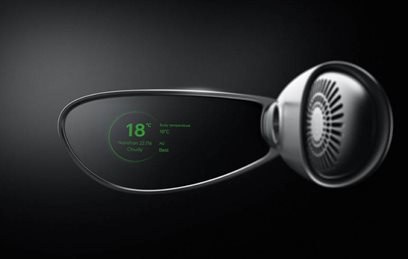15 February. 2022

How many of us remember Google Glass? Google originally advertised Glass as the first augmented reality device. The 2012 (yes, it was that long ago) demo reel featured biking aids and showed user-friendly information instantaneously appearing on-screen during everyday activities. Google failed under the weight of its ambition: to work, the technology powerful batteries, image-recognition capabilities, not achievable at the time, and a lot of data. At the end, the decision was made to supplement reality rather than augment it. Glass entered the competition with smartphones and Apple watches, and lost it to better cameras, larger capacities, and faster processors. This was the end of Glass due to ruinous strategy of riding the hype and potential of the product rather than selling the reality. But the vision was great and it was inspirational.
Enter OPPO. In December, they officially unveiled the OPPO Air Glass at INNO Day 2021. This is the less ambitious but much more realistic product in the new Extended Reality (XR) subtype known as aR (assisted Reality). This aR device is the first smart glass product, which is truly ready for consumer and is set to disrupt the way humans consume information. And it is feather light: 30g while supporting four different types of user interaction through touch, voice, head movement, and hand motion.
The Air Glass is built around Spark Micro Projector – one of the most compact projection system in the industry of 0.5cc. The projector is powered by a cutting-edge Micro LED, which has a brightness of up to 3 million nits. OPPO Air Glass adopts a bespoke optical diffraction waveguide, supporting two display modes - 16-level grayscale and 256-level grayscale and can deliver up to 1400 nits in average brightness covering all lighting conditions.
OPPO Air Glass is designed to be as accessible to as many people as possible, including users needed vision correction such as myopia and hypermetropia. Groundbreaking functionality of the Air Glass include walk & bike navigation that allows users to receive travel instructions and translation that coverts the voice input from one user will be automatically translated into target language texts, and displayed in real time on the other user’s Air Glass. The languages supported are Mandarin Chinese-English two-way translation as OPPO Air Glass have entered the Chinese Mainland market. Mandarin Chinese-Japanese and Mandarin Chinese-Korean will be added soon.
So long for one off Google’s most spectacular failure. Though the users of Air Glass are advised not to nod their head in approvingly too vigorously or head movements are recognised by Air Glass as open and close notification prompts.